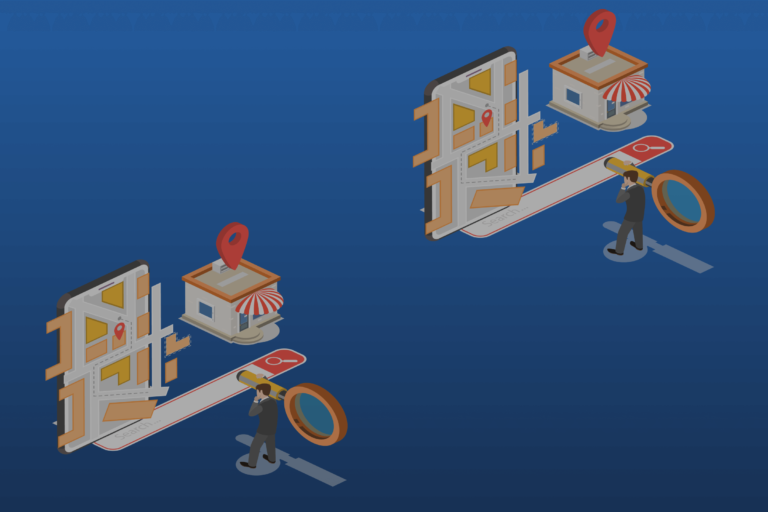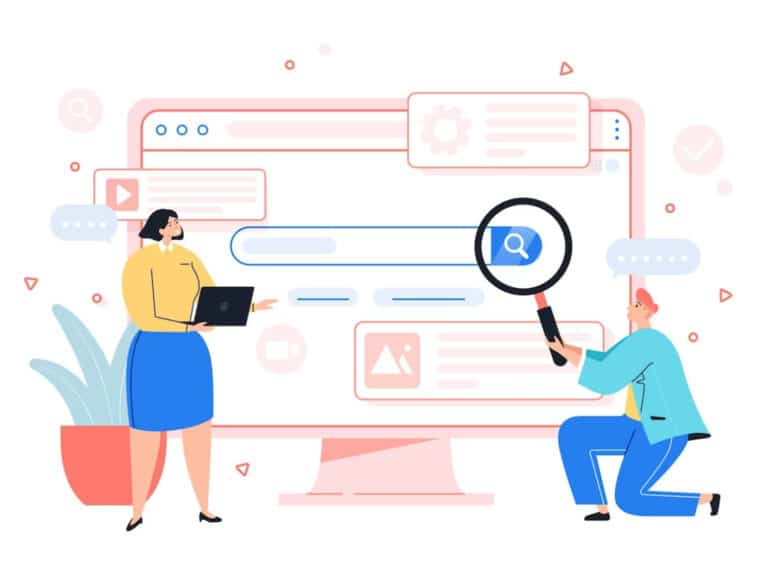You know it. Revenue is the most important factor in determining whether your business will thrive, or wither with time.
That’s why whether you’re just starting an SEO business or you’re already running one, knowing which metrics impact it directly will show you how to grow your business and sustain it. There are so many metrics that measure performance but we go beyond productivity and focus on the metrics that have a direct impact on your revenue.
These are key metrics that will provide a solid and stable reading about what’s currently happening in your agency:
- Customer Acquisition Cost (CAC)
- Customer Lifetime Value (CLV)
- Retention Rate and Churn Rate
- Monthly Recurring Revenue
Further down the article, you’ll find out why these metrics are important in providing a high level of overview concerning your revenue performance. More importantly, know how to compute and analyze them to optimize your whole business operations.
1. What is Customer Acquisition Cost?
Customer Acquisition Cost or CAC determines whether your agency is spending the right amount on the resources to acquire new clients. Tracking this will ensure you’re not underspending or overspending.
The formula for Customer Acquisition Cost (CAC)

Example:
If an agency spent $2000 for a marketing campaign and acquired 8 clients, the CAC is $250 per client
Given the example above, it’s a pretty effective result if the client is going to spend three times as much (or more) on your services. If you find yourself in a dilemma where your CAC is equal to how much they spend with your business over time (CLV), you can improve your advertising campaigns, marketing campaigns and improve conversion through your website.
Some methods you can use to reduce CAC:
- Grow your email marketing list. Create great email content, show potential leads what they’re getting — may it be a newsletter, a free website audit or an offer they can’t refuse.
- Re-evaluate all your marketing campaigns and strengthen the ones generating quality leads for your agency.
- Retarget and nurture leads that have been qualified in the past but didn’t push to close.
- Set up a system for lead generation. Learn how to work this to your advantage to get a lower CAC and better outcome.
2. What is Customer Lifetime Value?
Customer Lifetime Value is the estimate of the total profit from a single client for the entire time they conducted business with your agency.
The formula for Customer Lifetime Value (CLV)
(Total profit per month x Total months a client is subscribed) – Initial CAC
Example:
CAC = $250
Total Lifespan of a Customer = 10 month
Monthly Profit = $1000
($1000 x 10) – $250
CLV = $9,750.00/client
The example above shows a healthy CLV. If you come across a situation where the CLV and CAC ratio is 1:1, it shows that there is an imbalance in the acquisition process. The CAC to CLV ratio should stand at 1:4, with the CAC always having a lower value.
The ideal ratio for CAC to CLV = 1:4
Knowing this data will clear up any discrepancies in the marketing and sales strategy, resulting in a more optimized operation.
How to increase CLV?
- Strengthen Value Proposition. Know what your selling point is. The next step would be improving and owning your main value proposition will make you stand out. There are so many businesses out there that offer the same services. You should determine which characteristic (whether it’s a service or a campaign) makes you shine and conveys it clearly in all your campaigns consistently.
- Show care and empathy. This is the most basic rule in customer service, and most of the time overlooked. Showing empathy enhances the customer experience, how they feel about your business. This is more important in negative situations where they encounter a problem and need to be heard.
- Deliver good news but bad news faster. Nobody likes to hear bad news but in business, it’s unavoidable. Timing is important. Never delay delivering bad news and be direct about it but do so with compassion. Always follow-up with a solution.
- Go the extra mile once in a while. It’s the values that separate your agency from the hundreds (even thousands) offering the same services. Going the extra mile creates a unique customer experience for your client. This can be in any form may it be in terms of services or even just by sending a birthday greeting showing them that you remembered the occasion Going the extra mile for all your clients should be a part of your company culture.
- Start a rewards or loyalty program. A study indicates that 27 percent of small business owners estimate that 11-20 percent of first-time customers don’t return to their businesses. A loyalty or rewards program can stop this from happening. It will create an instant connection between you and your client. New clients will also be motivated to continue with you after their first purchase.
- Create high-quality content to connect with clients. Content is one of the ways you can show your clients that you know your business, your business has value and that you care for them. You can convey all these with quality content and an effective content marketing strategy. When content is involved, make sure that it is: Informative, educational, consistent, entertaining.
3. What are Customer Retention Rate & Churn Rate
Customer Retention Rate determines the rate of your client’s subscription renewal.
Building long-lasting relationships with your customers are one of the main goals of an agency. Why? Because loyal clients are your best advocates. They’re the ones who will continue to stick with you so value and nurture your relationship with them.
They know your brand and because you already have an idea which services they need, there’s a bigger possibility of cross-selling and upselling. Compared to acquiring new clients, nurturing your existing ones cost a lot less.
The formula for Retention Rate

Example:
Number of SEO clients at the end of the period = 100
Number of SEO clients acquired during the period = 10
Number of SEO clients at the start of the period = 105
[(100-10)/105] x 100
Retention Rate = 85.7%
Based on the example above your retention rate is 95.5%. There’s no definite answer as to what the average retention rate is because it is unique to specific businesses, but for an SEO company, a healthy retention rate is at least 80% per annum.
Subscription-based businesses rely on customer retention a lot and the goal here is to maintain retention rates at a high point.
Customer Churn Rate determines the rate by which your customers are getting out or canceling subscriptions. While the retention rate determines the clients you keep, the churn rate determines the clients you lost.
The formula for Churn Rate

Example:
Total monthly subscribers = 15000
Total unsubscribed at the end of the month = 1000
[(1500-1000)/15000] x 100
Monthly Churn Rate = 93.33%
Churn rate tells you if your agency loses clients more than they’re gaining. This metric allows you to determine whether you’re struggling to replace those who unsubscribed. A huge number of ‘unsubscribed’ communicates that there is something clients are not satisfied with and that is something you have to look into.
How to decrease customer churn rate?
- Always do regular client health checks
- Show value
- Show care and empathy
- Go the extra mile once in a while
Note:
- Churn rate involves knowing the number of clients your agency had at the start of the month vs how many clients you ended up with at the end of the month. A negative result means the business is losing more clients than it’s gaining.
- A healthy churn is always positive — a better one is a positive number with a high LTV.
4. What is Monthly Recurring Revenue (MRR)?
Monthly Recurring Revenue or MRR is the measure of your revenue from your subscriptions monitored monthly. Your expected and predicted revenue every month. MRR is the main metric for any SEO agency or digital marketing company.
The formula for Monthly Recurring Revenue

Example:
Let’s say you have 10 SEO clients with a monthly subscription of $1000/month, that would make your MRR $10,000/month
Understanding your MRR will allow you to track your growth and foresee possibilities for your business. You should also consider other aspects when computing for MRR. An example would be omitting new accounts from the computation because you’re not yet certain if they’re going to repurchase. If they do in the second month then include them in your calculation for that month.
How can you increase your Monthly Recurring Revenue?
- Pricing
- Upselling services to existing clients
- Improve your customer retention
Forecast Using These Key Business Metrics
Predicting and forecasting business results are skills that have to do with the ability to analyze the correct key performance metrics effectively. The keyword here is accuracy. For you to have a good read of the metrics, the numbers have to be accurate. The data history has to be on point. Gather these metrics and analyze your previous data. Compare it with the current one and this will improve your sales forecast.
Depending on your analysis, you can adjust your marketing campaign, sales plan, even tweak your logistics and make improvements on your product. There are a number of SEO tools out there that are available to you, take advantage of them to improve your number and increase the revenue of your SEO agency.



